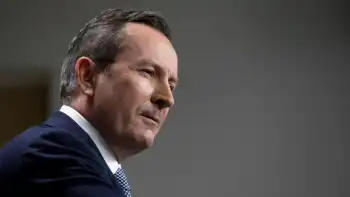U.S. Electricity Glut Dims Peaker Plants' Future
Chicago -- - A few years ago, plans for natural gas-fired peaker plants sparked a panic among environmentalists and community activists. They worried about air pollution, noise and just plain unsightliness.
But five years into deregulation, the only noises generated by peakers are from the 23 operational plants throughout Illinois, nine of which are in the Chicago area. Even they aren't making much noise.
Industry sources say the rush to build peaker plants has petered out, as an electricity glut has cut wholesale power prices and a shortage of natural gas has sent its price way up.
"We obviously had big concerns when it all took off," said Bruce Nilles, senior Midwest representative of the Sierra Club. "A bunch of people thought they were going to make fast money."
Now Nilles wonders if there will be a fire sale of the peakers.
They are miniature power plants, fired by natural gas, designed to crank out electricity during periods of peak demand, such as on a hot summer day when there's heavy demand for air-conditioning.
Energy companies from Maryland to California got in line to build peakers in Illinois soon after utility deregulation legislation passed in 1997.
Between 1999 and 2002, 9,339 megawatts of peaker plant capacity came online, according to the Illinois Environmental Protection Agency. Permits for another 4,529 megawatts have been granted. Total generating capacity is about 46,000 megawatts, 19,000 of which is owned by the major utilities.
"We have got power coming out of our ears," said Susan Zingle of the Lake County Conservation Alliance, one of the environmental groups concerned about the rapid increase in peaker plants.
Although 12 new plants have been approved by the Illinois EPA and three others are in review, there are doubts about how many will be built.
John Moore of the Environmental Law and Policy Center said it doesn't make sense to build peakers when the energy market is depressed.
"There is plenty of supply in the market right now," agreed Doug McFarlan of Midwest Generation, which operates peakers at nine sites.
The majority of capacity generated by its peak-usage plants goes directly to ComEd, he said. In an environmental report to its customers, ComEd said it got only 2 percent of its power from natural gas.
Any plans to build new peakers have been suspended for now, McFarlan said. He guessed most other utilities were also shelving plans for peakers.
"We haven't built new peaker capacity in the past few years," he said.
Related News

Frustration Mounts as Houston's Power Outage Extends
TEXAS - Houston is enduring significant frustration and hardship as a power outage stretches into its fourth day amid a sweltering heatwave. The extended blackout has exacerbated the challenges faced by residents in one of the nation’s largest and most dynamic cities, underscoring the critical need for reliable infrastructure and effective emergency response systems.
The power outage began early in the week, coinciding with a severe heatwave that has driven temperatures to dangerous levels. With the city experiencing some of the highest temperatures of the year, the lack of electricity has left residents without essential cooling, contributing to widespread discomfort…




